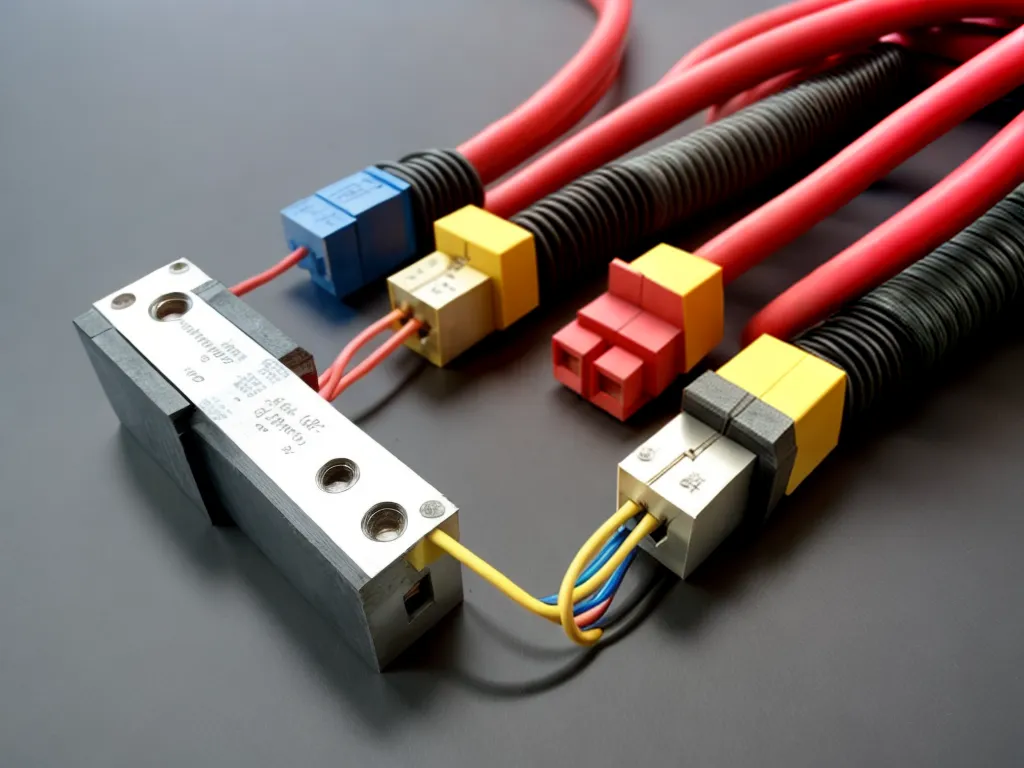
Bonding of Grounding and Neutral Conductors
Introduction
Bonding the grounding and neutral conductors is a crucial safety practice in electrical systems. Proper bonding helps prevent electric shock and protects equipment in the event of a ground fault. In this article, I will explain in depth the reasons for bonding, where bonding should occur, and the methods used for connecting the grounding and neutral conductors.
What is Bonding?
Bonding refers to the permanent joining of the grounded circuit conductor (neutral) and the grounding conductors in an electrical system. This provides a low-impedance path for fault currents to flow, ensuring enough current flows to trip circuit breakers and blow fuses.
Some key points on bonding:
-
Bonding equalizes the potential between neutral and ground conductors. This prevents voltage from appearing across the grounding system.
-
The main bonding jumper connects the grounded (neutral) and grounding conductors at the main service panel. This creates the system bonding point.
-
Equipment grounding conductors are bonded to the grounded conductor at the service entrance and at the disconnecting means for any separately derived systems.
-
Bonding must be permanent and continuous to be reliable. Mechanical connectors like lugs or clamps are used.
Reasons for Bonding Neutral and Ground
There are several important reasons why the neutral and grounding conductors must be bonded together:
-
It establishes an intentional, low-impedance path for fault current to flow so that overcurrent devices like fuses and breakers activate quickly. This quickly de-energizes any short circuits or ground faults.
-
It ensures the voltage on metal enclosures is as close to zero as possible relative to the earth. This protects against electric shock.
-
Bonding allows the system to operate effectively with ground-fault circuit interrupters (GFCIs) and appliance leakage current interrupters.
-
Bonding supports the operation of overcurrent devices like circuit breakers and fuses. It allows enough current flow to trip them open quickly on a ground fault.
-
It equalizes the potential between neutral and ground conductors at the service entrance. This prevents differences in voltage from appearing across the grounding system.
Where Should Bonding be Installed?
Proper bonding must occur in the right locations to be safe and code compliant. Some key bonding points include:
-
The main bonding jumper connects the grounded (neutral) and grounding conductors at the main service panel. This is the primary system bonding point.
-
A bonding jumper bonds neutral and ground busbars within distribution and panelboards. This equalizes potential inside the equipment.
-
The grounded conductor is bonded to the equipment grounding conductor at all disconnects for any separately derived systems.
-
In systems with a transfer switch, bonding must be installed on both the normal and alternate power sources.
-
A bonding jumper may bond the neutral and ground busbars of separately derived systems together. However, this is not required if they are already bonded at the source.
-
Metallic conduits, raceways, and service enclosures are bonded to the grounding system.
Methods of Connecting Neutral and Ground
Some common methods used to bond the neutral and grounding conductors include:
-
The main bonding jumper - A conductor sized to the service entrance conductors that connects the neutral and ground busbars in the service panel.
-
Bonding screw or strap - Mechanical lugs or straps that bond a grounded conductor to an enclosure or ground busbar.
-
Wire or bonding jumper - A conductor installed specifically to bond neutral and ground conductors together.
-
Connections to metallic conduit - Conduit that qualifies as an equipment grounding conductor may bond neutral to ground through appropriate terminations.
-
Solderless connectors - Mechanical lugs, clamps, and splices rated for the application that permanently join copper wires.
-
Exothermic welding - A very low-impedance bonding method using a chemical reaction and molten copper to permanently join conductors.
-
Wire nuts or crimp splices - Twisted connectors may bond smaller neutral and grounding conductors. Crimp splices provide a permanent low-impedance connection.
Conclusion
Bonding the neutral and grounding conductors is a vital safety practice required by electrical codes. Properly bonding the neutral and ground establishes an intentional, low-impedance ground fault current path. This quickly de-energizes any ground faults before dangerous voltages can persist. Bonding connections must be made in the right locations to be effective and safe. A variety of permanent bonding methods can be used to ensure a solid, lasting connection between the neutral and ground conductors. Following proper bonding procedures is critical for operating overcurrent devices, eliminating shock hazards, and safely returning fault currents.